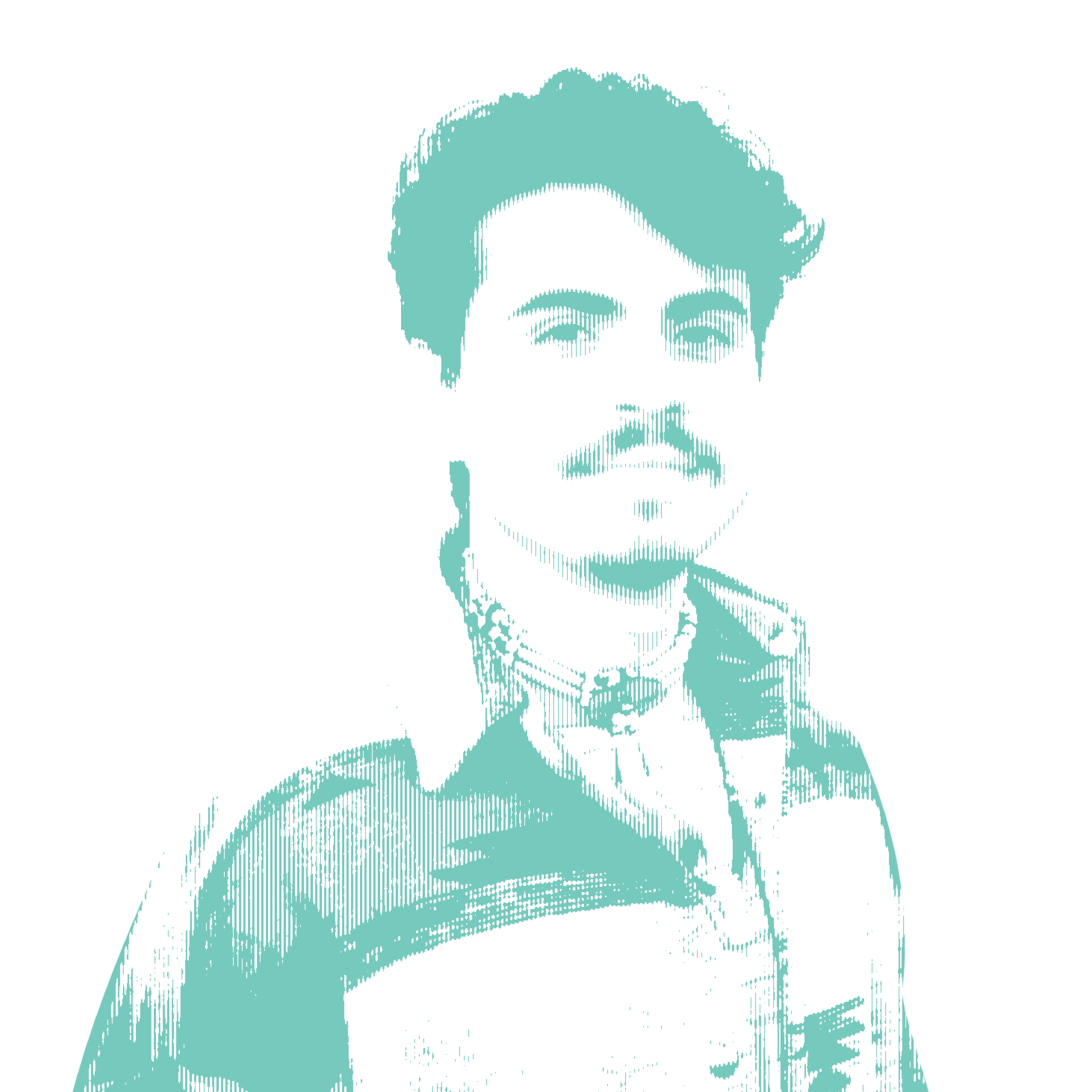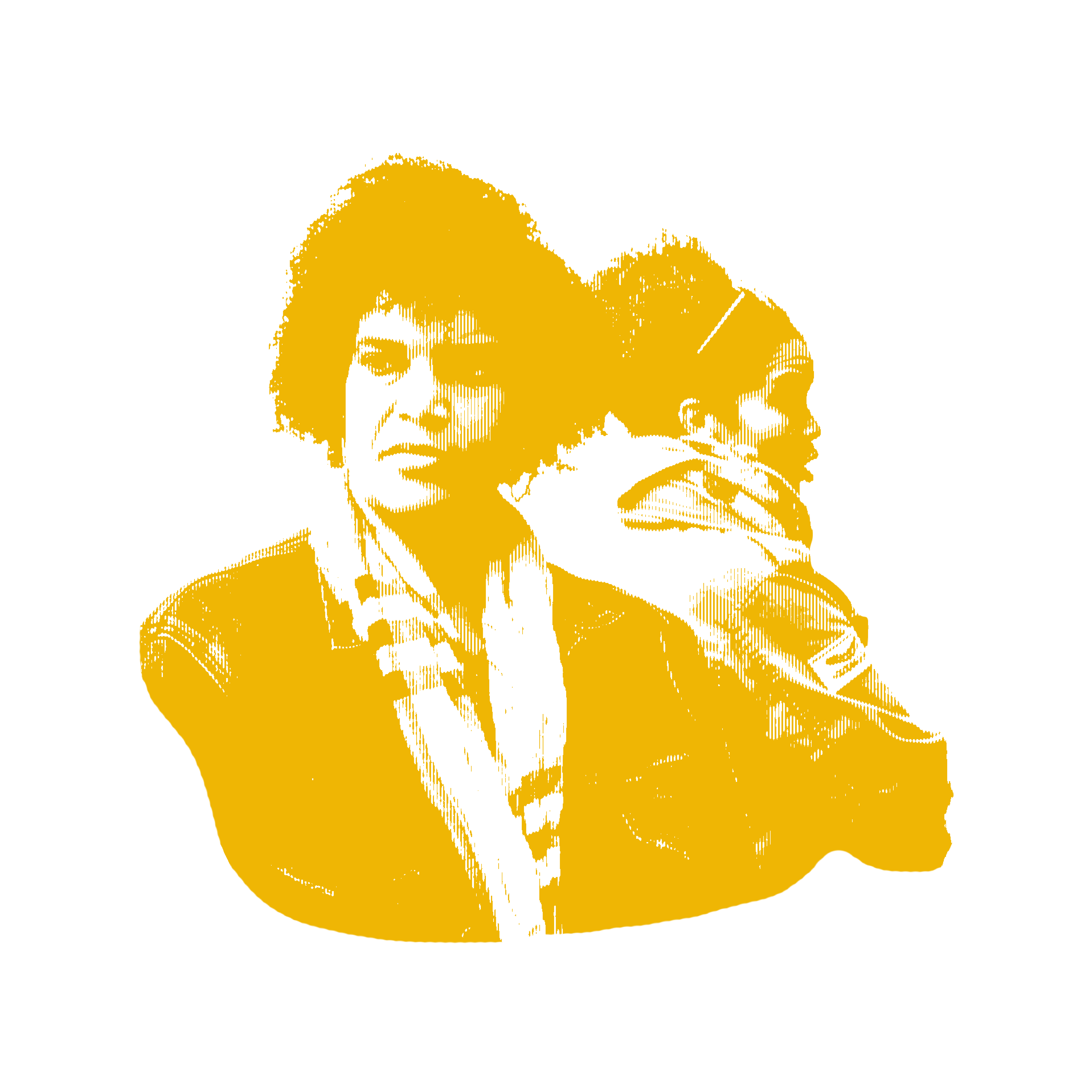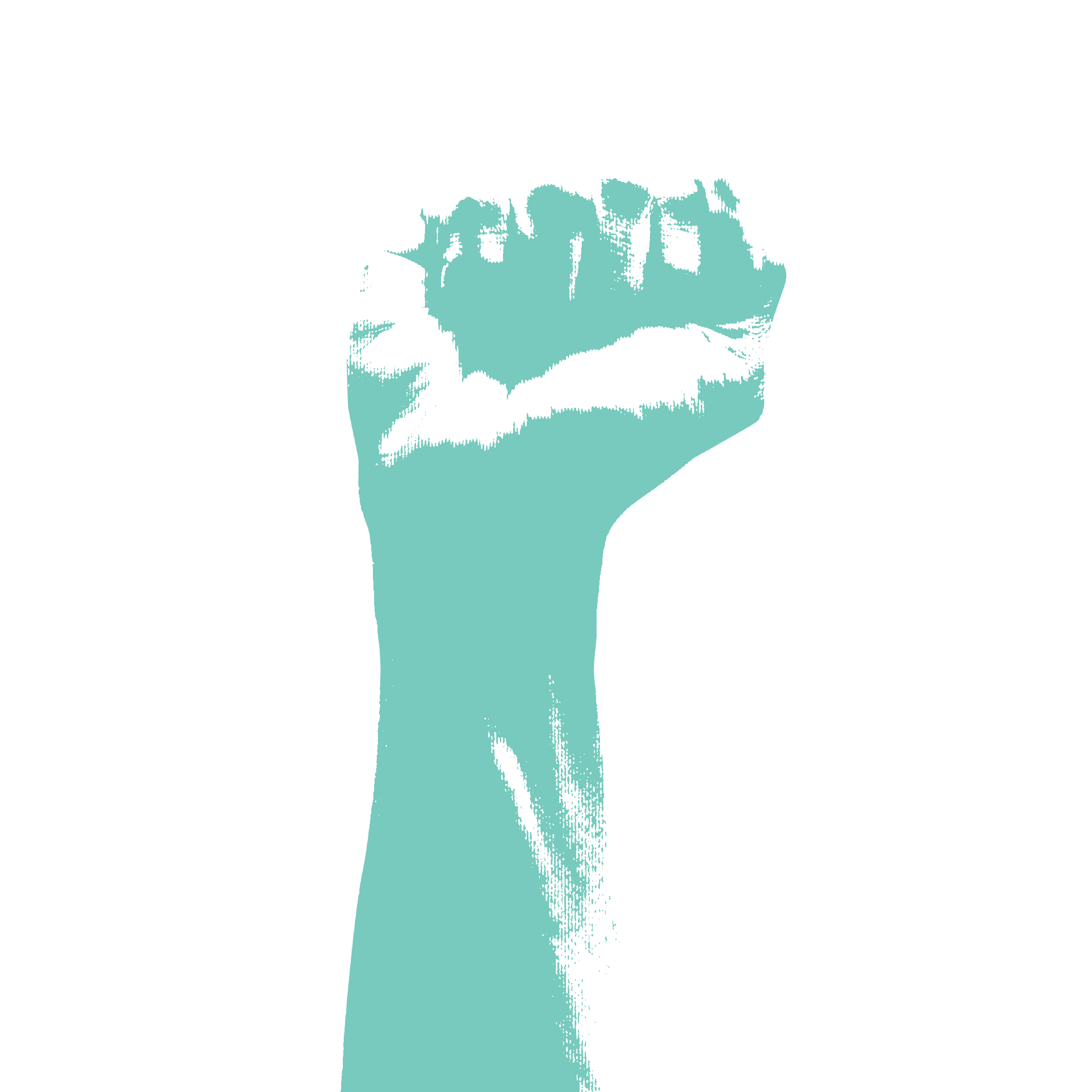- Brazil’s 2010 census was the first to map out the presence of Indigenous people throughout the whole country, but still maintained the term pardo, for a mixed-race individual, that Indigenous activists say has long been used to render Indigenous identities “invisible.”
- The next census is due in 2022, and activists and leaders are mounting a campaign to get all Indigenous Brazilians to self-declare as Indigenous.
- Getting a more accurate picture of the number and distribution of Indigenous people, especially in urban areas, is key to informing public policies geared toward their specific needs, experts say.
- “Everything is Indigenous,” says Júlio César Pereira de Freitas Güató, one of the Indigenous leaders promoting the campaign. “All the rest is invasion."
When the Portuguese fleet led by Pedro Álvares Cabral landed in Brazil in 1500, Pero Vaz de Caminha, a knight serving as the secretary to the royal expedition, wrote a detailed official report to the sovereign dated May 1 of that year. Caminha’s report was considered one of the only three authoritative records of the “discovery” — a term that has since come to be understood as conquest or invasion. In his letter, Caminha described the native people as pardo (brown): “They were pardo, all naked, with nothing to cover their shame. In their hands they carried bows with their arrows … Their feature is to be pardo, in a reddish way, with good faces and good noses, well made.”
More than five centuries later, the term pardo lives on. It’s an official category of color and race in Brazil’s census questionnaire to designate people of mixed race, including those of Indigenous-Black and Indigenous-white heritage. But Indigenous leaders see the term as one of the key elements behind the perennially underestimated numbers of Indigenous people in Brazil, and the subsequent lack of public policies focused on the native population, mostly in urban areas, where they are made more “invisible.”
“By the 18th century many families [of our ancestors] adopted the expression pardos to not be enslaved or killed. Anyone who reads the history of our ancestors knows that this concealment was a resource for the survival of many collectivities of native peoples here in this territory,” said Ailton Krenak, a prominent Indigenous leader. “These categories [in the census] were created to hide our identity and erase our memory.” Krenak was speaking at the event “I am Indigenous, not pardo”, promoted in April as part of a national Indigenous mobilization effort to bolster the self-declaration in the next census of Indigenous people who had identified themselves as pardo in previous censuses. The event highlighted the terms pardo and mestiço (mixed race) as “a colonial trick” that produces categories of poverty as it triggers the exclusion of Indigenous people’s identity recognition in society and the subsequent fulfillment of their due rights.
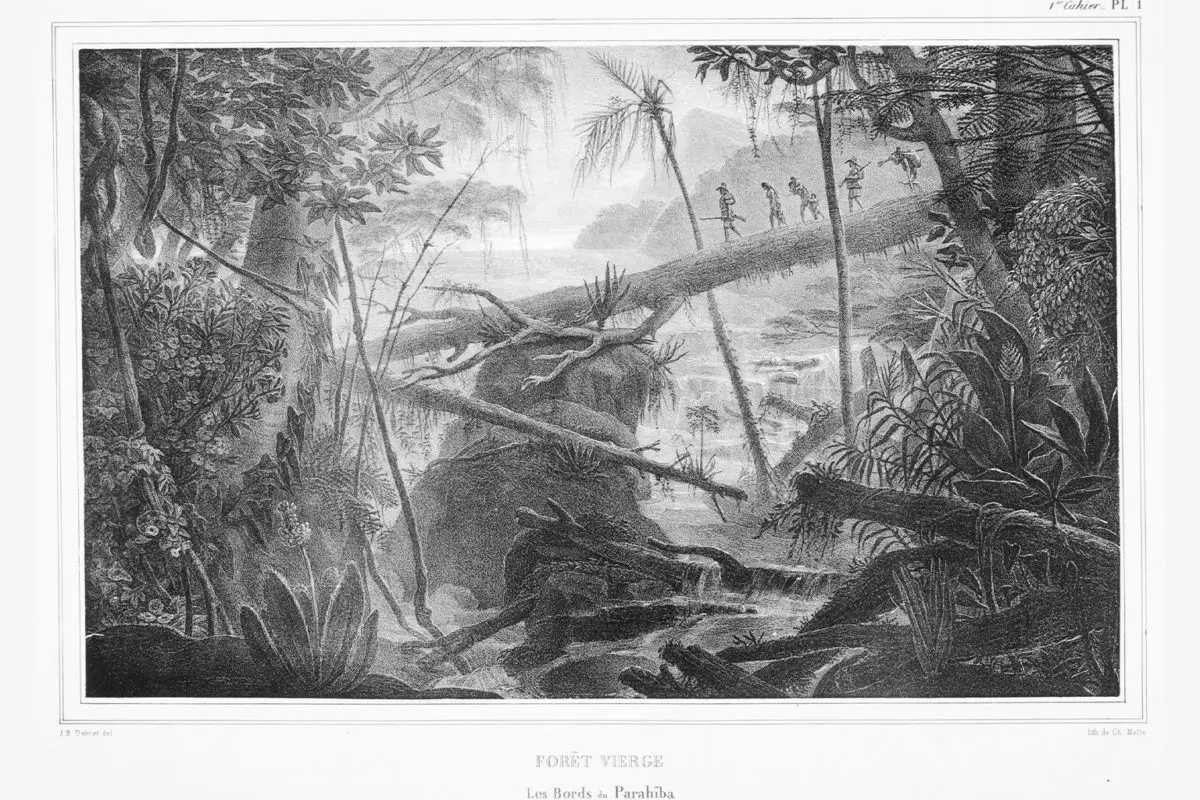
According to the 2010 census (the next census will only be published in 2022), there are about 900,000 Indigenous people throughout Brazil, which represents less than 0.5% of the total population. More than a third of Brazil’s Indigenous population, or about 315,000 individuals, live in urban areas, according to the Brazilian Institute of Geography and Statistics (IBGE), which conducts the census. Those self-declared as pardo totaled 82.28 million or about 43% of the total population, according to census data.
But Indigenous leaders say the figures presented for Brazil’s Indigenous population are an underestimate, given the self-declaration of many natives as pardos to try to evade the wider society’s ingrained prejudice against native people.
“It is necessary that we do not forget the historical process and leave this moment where we are now toward a configuration of this plural community in Brazil where the constitution of terms such as pardo, mestiço, caboclo [Indigenous-white mixed race] and all these other categories that were instituted within colonialism, that it is not just a quotation, but that they are perceived with all their historical weight and colonial violence that requires us to look at the issue of racism as well,” Ailton Krenak says. “[There is] structural racism, as it is perceived today, whose marks since the 17th and 18th centuries have been stamped on our skins like an animal branding iron.”
Throughout history, there were several terms in addition to pardo that Indigenous people were associated with, Krenak says, including caboclo, sertanejo and gentio, whose definitions varied over time. But all these terms directly affected how Indigenous people identified themselves, and the impacts are reflected in the census today.
Krenak says there needs to be a debate over how IBGE conducts the census and the categories it uses to define color and race. He also calls for a rethink of social studies in Brazil about pardos and Indigenous peoples. He points to censuses in other countries, including the United States, where “there is no doubt of who is Black and [who is] Indigenous.” The uncertainty in Brazil, he says, reflects in the lack of policies focused on the Indigenous population, as the majority of pardos end up framed as Black people — who represent 7.61% of the population — for social policies.

In his article “Entering and leaving the ‘mixture’: Indigenous in the national censuses,” João Pacheco de Oliveira, a professor and curator of the ethnographic collections at the National Museum and member of the Science and Culture Forum of the Federal University of Rio de Janeiro (UFRJ), describes how the presence of Indigenous people in Brazil has been demographically hidden over time. He says the pardo category in the census, and in demographic policymaking more widely, “seems to have no other function than to serve as an instrument of the discourse of miscegenation and to gather numerical evidence that reinforces the ideological assumptions regarding the tendency toward the progressive ‘whitening’ of the Brazilian population.”
He adds that the value of diversity is countered by efforts to deny it through “the apology of mixing,” which is presented as a fair and peaceful solution to racial conflicts but in reality nulls cultural and ethnic diversities. Oliveira calls this “racismo à brasileira” (“Brazilian-style racism”), which tries to pass itself off as a feature of the “cordial” Brazilian character. For him, the pardo category is “the channel through which this issue navigates,” leading to Indigenous people being “excluded from the national melting pot” in the censuses carried out in the 20th century.
“The pardo category is a generic indicator for mixing between different color groups. This is not at all the meaning of the Indigenous condition, which refers to a differentiated legal status and not to a situation of alleged internal homogeneity and external distinctiveness in terms of color,” Oliveira says. “By declaring themselves as Indian or Indigenous, the census respondent is not intending to be included in a classification in terms of color, but rather the specificity of their rights and their relationship with the state.”
The professor adds that Brazil’s Indigenous people “do not have chromatic homogeneity, nor do they have physical traits that can distinguish them from other segments of the population,” meaning they can easily be classified as Black or white. “Ultimately, the Indigenous status has nothing to do with assumptions about racial or color unity.”
The IBGE has acknowledged the difficulty for some Indigenous people to answer the questions on color and race in the census. In a pilot test of the 2022 census, many Indigenous people tended to respond with the information from their birth certificate, says Marta de Oliveira Antunes, the coordinator of IBGE’s technical group into traditional peoples and communities.
She cites the case of an ethnic Kaingang woman’s answer: “I hate this question.” When asked why after finishing the questionnaire, she responded: “Because in my document, I’m the only one in my family identified as parda,” the female form of the term. When the census taker asked if she wasn’t parda, the Kaingang woman answered: “For you in the state I am, but I am not … I’m Indigenous.”
There are also translation problems when it comes to applying the term for non-Portuguese Indigenous speakers. In the Yanomami language, Antunes notes, pardo means “dead leather.” “The guide was laughing in my face for a while when I tried to understand how he was doing the translations,” she says. “Black and yellow, they translate to black color, and black color to yellow color. White is the non-Yanomami, it’s us, any of us, regardless of our color or race. And Indigenous to them means Yanomami, it was the translation. So the question didn’t make any sense [to them].”
Despite mounting criticism, the pardo category will remain in the 2022 census, Antunes says, as it was part of previous censuses. But she indicates there will be several changes in the census methodology to allow the collection of more thorough information about Indigenous people.
One new addition is the question, “Do you consider yourself Indigenous?” This will be applied in all urban areas previously identified by IBGE as home to a significant number of Indigenous people, whose presence wasn’t noted in previous censuses as they tended to respond to questions of color and race with whatever was written on their birth certificates and other official documents. In the same vein, IBGE has also changed the term aldeia (village) for Indigenous groupings to also cover Indigenous communities in the urban context.
Antunes says the addition of this latter question for the 2010 census in Indigenous reserves bolstered the rate of self-declaration by 15.3%. She cites the case of the Cinta Larga people, who despite having a “very well constructed” Indigenous identity of their own, still mostly self-declare themselves as Black. But through the addition of the question of whether they are Indigenous, their Indigenous identity can be registered in the census, Antunes says. “The question of color or race couldn’t handle it, because it’s a form of ethnic-racial classification of much of the non-Indigenous society and very much imposed by the coloniality.
“If inside the [Indigenous] reserve the people who are treated as Indigenous by the state in public policies — who are always seen as Indigenous, who are perceived as Indigenous people — if they are declaring themselves of another color or race, what happens outside Indigenous reserves?” she adds, noting that it’s not an easy question for non-Brazilian middle-class whites or Blacks to think about this issue of color or race, given the inherent prejudices.
COVID-19 throwing open ‘inequalities and prejudices’
The COVID-19 pandemic has highlighted how the lack of official recognition of Indigenous identity affects Indigenous Brazilians living in urban areas. Filmmaker and Portuguese language schoolteacher Elvis Ferreira de Sá, known as Hugo Fulni-ô, from the Fulni-ô ethnic group, lives in an Indigenous reserve near the city of Águas Belas in the northeastern state of Pernambuco. He says he was vaccinated for COVID-19, but he saw Indigenous people in the city, just half a kilometer (0.3 miles) from the reserve, being denied this right.
“Indigenous villagers and [Indigenous] in urban context: this nomenclature has a negative impact on Indigenous people living in cities. Vaccination was only [available] for villagers. It’s as if the Indigenous was discarded. It was prejudice,” Hugo Fulni-ô, who has a master’s degree in linguistics from the Federal University of Alagoas (UFAL), tells Mongabay in a phone interview. “[Indigenous] can be rural or urban. The place does not matter.”
The situation he describes is one of many such cases throughout Brazil, unveiling the constant struggle that Indigenous people face not only to be recognized as Indigenous in the cities, but also to have access to the differentiated public policies that would otherwise be available to them in the reserves.
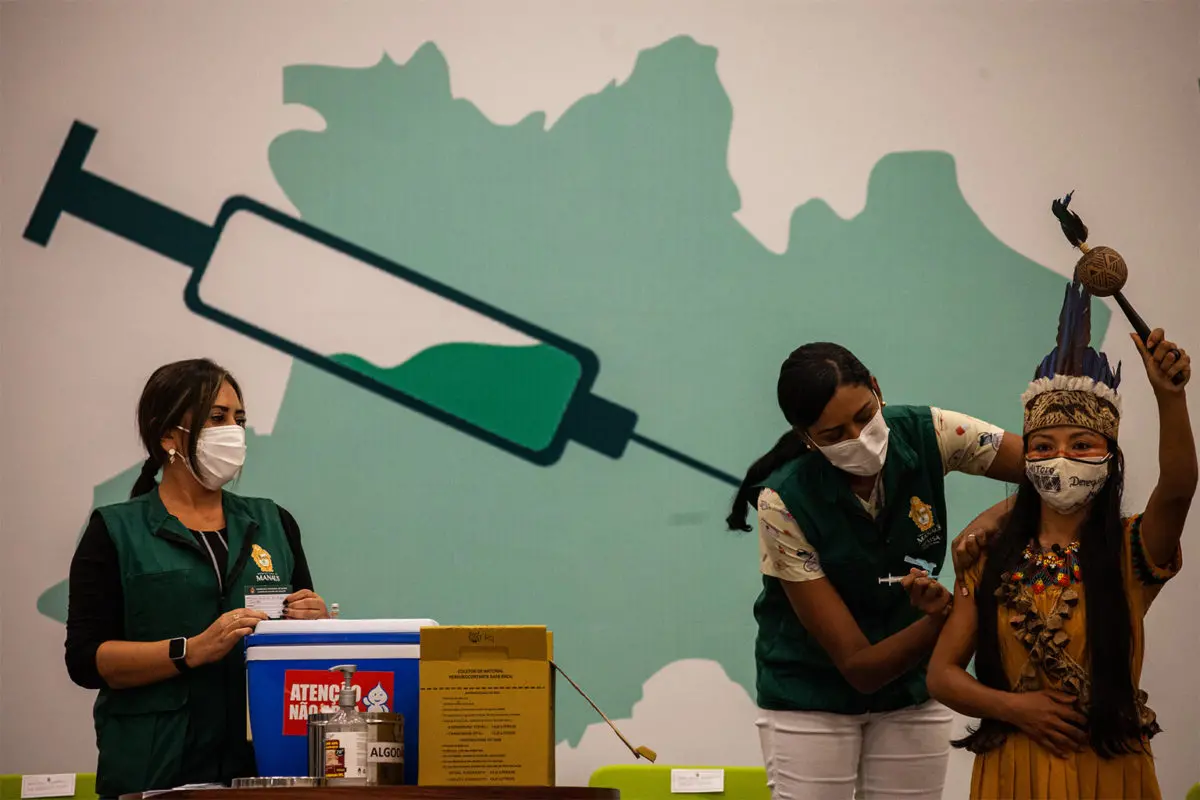
In March this year, the Supreme Federal Court (STF) ruled that Indigenous people should be included in the federal government’s vaccination plan, given historical, cultural and social reasons that made Indigenous people more vulnerable to infectious diseases, with a mortality rate higher than the national average.
But the implementation of this priority in urban areas has fallen short.
In some places, federal prosecutors have had to file lawsuits to guarantee the vaccination of Indigenous people in cities. That was the case in Amazonas state, in the Amazon region, where the Federal Public Ministry (MPF) has just obtained a federal court ruling determining the inclusion of all Indigenous peoples of Amazonas in the first phase of priority vaccination against COVID-19.
“There are Indigenous in an urban context in the entire Amazonas,” federal prosecutor Fernando Merloto Soave, who filed the lawsuit, tells Mongabay. The filing presented updated information on the Indigenous urban population in the state from Indigenous associations, with epidemiological studies showing that Indigenous people have a higher vulnerability to infectious diseases like COVID-19.
In Campo Grande, the capital of midwestern Mato Grosso do Sul state, the vaccination of Indigenous people also had to be compelled by a lawsuit from the Federal Public Ministry. “COVID-19 threw open inequalities and prejudices. There is no way to dissociate Indigenous people in urban [areas] from the priority of the vaccine,” Marco Antonio Delfino, a federal prosecutor in Mato Grosso do Sul, tells Mongabay in a phone interview.
He says the issue is “much more about racism,” as Indigenous people have been always part of priority groups for other vaccination campaigns, including tuberculosis and flu, along with prisoners, homeless people, and people with HIV. “Nobody ever questioned this. But when they have access to something [other people] want, it shows that this discussion is much more about racism than a technical discussion,” Delfino says. He adds the priority given to Indigenous people prompted the question of “Why do privileged white people have to take the vaccine after Indigenous people, especially [in] urban [areas]?”
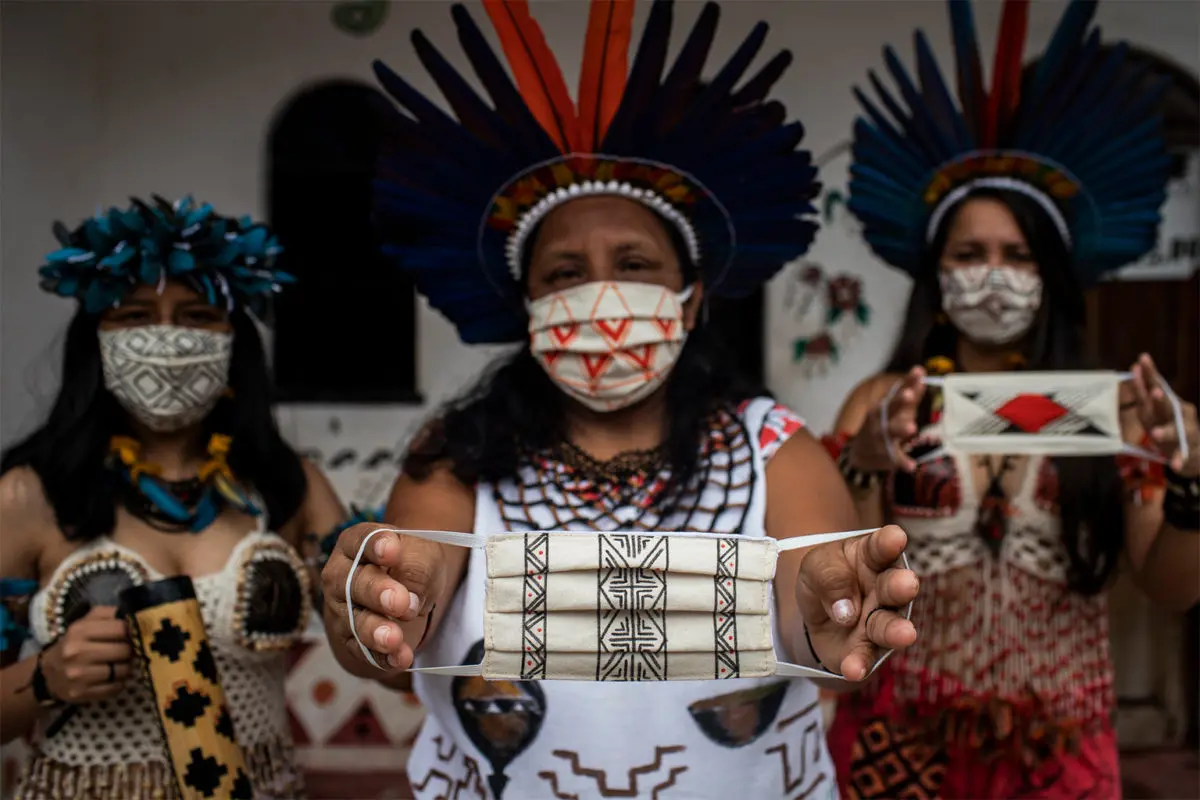
Multifaceted Indigenous presence in urban areas
The 2010 census was the first to map out the Indigenous presence across the whole of Brazil, as it introduced the Indigenous option in the question of color and race for all Brazilian citizens; in previous censuses this question applied only to a small sample of the population. The result was a remarkable Indigenous diversity: 305 ethnic groups and 274 languages in the entire Brazil.
In urban areas, 297 ethnicities were detected in the census; four of them — Tapajós, Aimoré, Tamoio and Karijó — had been considered extinct in previous censuses. But this diversity is likely to be even richer, as 43% of Indigenous respondents said they didn’t know their ethnic group, whereas the ethnicity of 5.5% was classified as poorly defined, undetermined or not declared, according to IBGE.
Mongabay’s in-depth series on Indigenous people in Brazil’s cities, which wraps up with this report, shows that the cities with the highest numbers of Indigenous people are São Paulo, São Gabriel da Cachoeira (in Amazonas state), Salvador (Bahia state), Rio de Janeiro, Boa Vista (Roraima state), and Brasília, the national capital. Only two of these cities, São Gabriel da Cachoeira and Boa Vista, are in states that comprise part of the Brazilian Amazon.
Throughout the reporting of this series, several experts Mongabay spoke to called for the inclusion of Manaus, capital of Amazonas state, which is expected to be the city with the highest number of Indigenous people in the 2022 census.
Federal prosecutor Fernando Soave estimates there are at least between 12,000 and 15,000 Indigenous people living in Manaus, based on the fact that 3,000 Indigenous families received food aid from the nonprofits Coordination of Indigenous Peoples of Manaus and Surroundings (COPIME)and Cáritas during the COVID-19 pandemic. Some estimates put Manaus’s Indigenous population much higher, at 30,000, he says.
“Practically the entire capital is Indigenous,” Soave says. “There are more than 20 Indigenous urban groupings in Manaus, located in general risky areas, peripheral areas, ‘red’ areas dominated by drug dealers and crime, and even civil defense risk.” The Tarumã neighborhood alone, he says, is home to 4,000 people, the majority of them Indigenous.
Life in limbo is a common feature of being Indigenous in the city — the struggle to be recognized as Indigenous and also to have access to constitutionally guaranteed rights, while municipal, state and federal governments play the blame game, according to prosecutors, activists and Indigenous people.
But in some cities, progress is being made. In Manaus, Soave says, initiatives by the Federal Public Ministry in alliance with other institutions have succeeded in advancing the interests of Indigenous health, such as the inclusion of shamans in healing treatments, diet adaptation according to community habits, and using hammocks instead of beds in hospitals, for example.
“The idea is to replicate it all over Brazil. A differentiated service is not going through the front. Sometimes the person wants a hammock in the hospital; sometimes the person is used to eating fish and the hospital diet doesn’t include it, and sometimes it harms their health,” Soaves says. There is also a fight to reposition the categories of race and color as mandatory for any health assistance to facilitate the fulfillment of Indigenous needs.
Soave says he is also pushing for a project at the city level for the creation of Indigenous cultural centers to host Indigenous schools for teaching traditional issues, with Indigenous teachers, complementing the regular curriculum. The initiative also aims to establish a specific career plan, including positions and salaries, for Indigenous teachers, by taking into account their ancestral knowledge, which is based in oral tradition, instead of requiring official certificates.
Indigenous people are present in urban areas across Brazil in diverse ways. The list of cities with the highest proportion of Indigenous residents is different from that with the highest absolute numbers, and is concentrated in Brazil’s north and northeast: Marcação (in Paraíba state), São Gabriel da Cachoeira (Amazonas), Uiramutã (Roraima), Baía da Traição (Paraíba), Carnaubeira da Penha (Pernambuco) and Pariconha (Alagoas). Only two of those, São Gabriel da Cachoeira and Urimatã, are located in the Amazon region.

In many areas, the Indigenous struggle is directly linked to the centuries of colonization, when many Indigenous people were displaced to cities, or the cities simply engulfed their lands, as in the case of the reserve where Hugo Fulni-ô lives.
Even though the city of Águas Belas sits a stone’s throw from their reserve, the Fulni-ô, all 5,000 of them, can still practice their traditions, according to Hugo Fulni-ô. He says they go every year to the Ouricuri ritual, where they stay for three months, from September to November. The territory spans 12,000 hectares (30,000 acres), but the ancestral land spreads much further because of “the usurpation” of the territory, Hugo Fulni-ô says. “Our people were called for the Paraguay War. Then Princess Isabel’s magnum letter donated this territory. But it was ours already. And there are 75,000 under study stalled at Funai.”
The diverse Indigenous presence in urban environments is directly connected to the colonization process that in many areas sought to “assimilate” native people, says Roberto Liebgott, coordinator of the Indigenous Missionary Council (Cimi), an advocacy group linked to the Catholic Church, in Brazil’s south.
“Since the colonizers arrived, they have been constituting villages … these villages, mansions, were also being catalysts for what attracted the Indigenous people, from a very early age,” he says. “One practice was the attraction because when you were attracting, you integrated, you brought them to the environment of integration. Another practice was repelling [Indigenous people], as cities, properties, private lands were also advancing [over Indigenous lands] promoting the expulsion of Indigenous people who were close to these environments of urban economic interest.”
This process, Liebgott says, was even more intense in the south and southeast, where “there is practically nothing left” in terms of an Indigenous presence.
Call for self-declaration in 2022 census
The upcoming census will be carried out in a unique way, Antunes from IBGE says. For the first time, she says, the institution has commissioned an anthropologist for the process. Census takers will work alongside Indigenous people to gain access into Indigenous areas and facilitate communication with the community, helping win the residents’ trust to get the most accurate information possible.
“We only go every 10 years in these areas, some are very expensive to access. And it’s not fair for us to leave with poor-quality information. It’s not fair to Indigenous people and it’s not fair to society,” Antunes says.
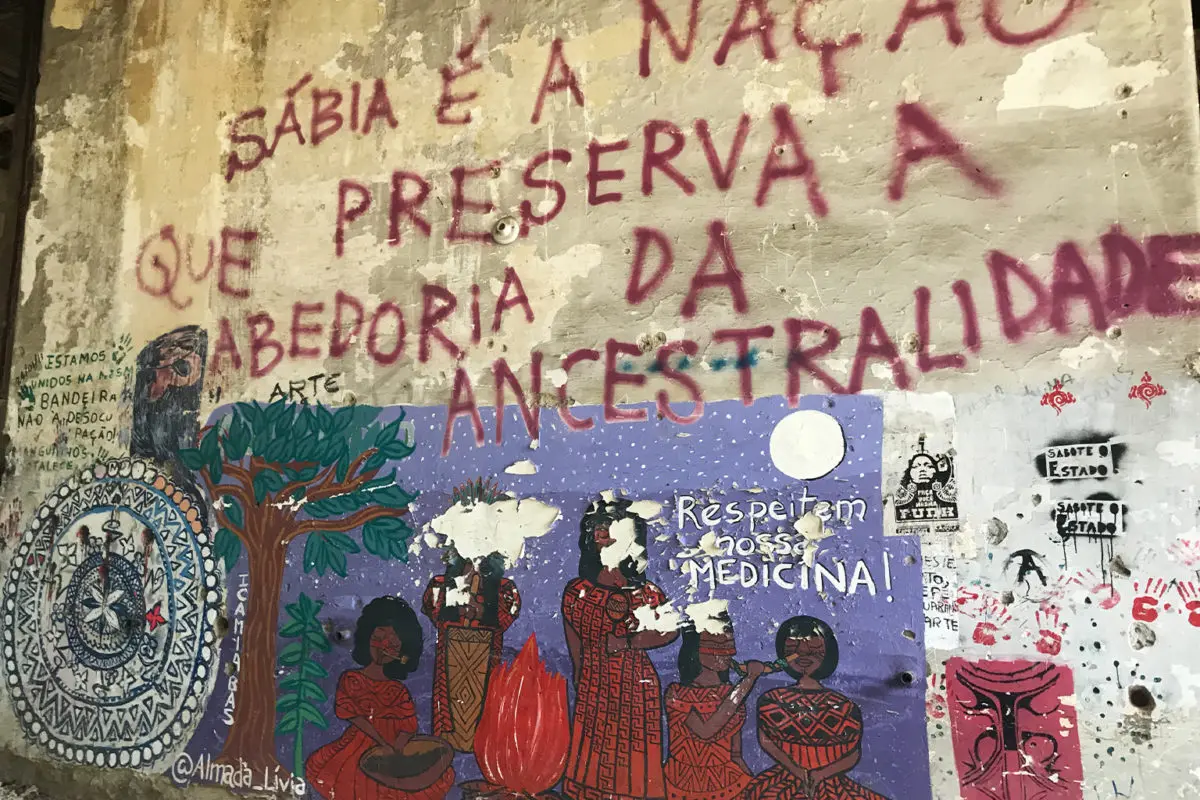
Indigenous people are also being paid for their work as guides for the census takers, Antunes says, and are highly involved in getting Indigenous communities to self-declare.
Getting the most accurate census data possible is key, as it has a direct impact on public policies, says Ricardo Ventura Santos, a researcher at the Fiocruz research institute and professor at the National Museum. He says the census data need to be analyzed and scrutinized for improvement, and data on Indigenous identity need to be refined to derive a better definition for urban Indigenous residents.
“This urban [identity] is very diverse, as is the rural [identity],” he says. “The distribution of these individuals between urban spaces, the heterogeneity in the urban context is very important. And this influences everything … Firstly, how do you identify Indigenous peoples and other minorities and with [all] these visibility data issues of inequality, housing, where people are living in urban areas, who am I living with … the sanitation conditions in these areas, and the conditions of the indicators of violence … So generating these Indigenous data has repercussions for all public policies, whatever they may be.”
Several Indigenous activists and experts Mongabay spoke to criticized Funai, the federal agency for Indigenous affairs, over its lack of assistance for Indigenous people living in urban areas. The agency says that “Indigenous citizens in a situation of social vulnerability” have recourse to the same social assistance network as other Brazilians, but that it is working to “qualify public policies aimed at Indigenous people living in cities” in light of the different challenges they face.
Although Funai didn’t provide any specific information regarding policies for Indigenous people in urban areas, the institution has “naturally” increased its assistance for Indigenous people in urban areas given the increasing demand, according to an official who has worked at Funai for more than a decade and spoke to Mongabay on condition of anonymity, citing threats against speaking to the press. The source says that in the past issues tied to Indigenous people in the urban context were treated as “less important,” but that now it goes without saying that food aid, for instance, should be dispatched to Indigenous people in an informal urban settlement. In many areas, the source says, much of Funai’s work consists of issuing various civil documents. The issue of land demarcation is the only one that the agency really focuses on outside the urban environment, according to the source.
One of the victories celebrated by Indigenous people was the establishment of a quota system that allowed them to enter universities. The number of Indigenous students enrolled in higher education jumped from 10,219 to 80,652 between 2010 and 2019. In the same period, the number of Indigenous university graduates also increased from 1,022 to 6,718.
However, there are still challenges in the campus environment.
Born in Rio de Janeiro, school history teacher Marize Vieira de Oliveira Guarani was the first Indigenous person to enroll for a doctorate degree in education at the Federal Fluminense University (UFF) in the neighboring city of Niterói. She did so through the quota system for Indigenous people. But she says an Indigenous colleague of hers was rejected in the quota for pardos because he was considered to have “very clear” skin. There were several places for pardos and just one for Indigenous applicants, she says.
Indigenous language teacher José Urutau Guajajara has a master’s degree in linguistics from the Federal University of Rio de Janeiro (UFRJ) and is now pursuing a doctorate in linguistics at Rio de Janeiro State University (UERJ). But he reports difficulties adapting to the academic system.
“It is very difficult to have a school that will understand our times, understand the time of the Guajajara. We are dispersed,” he tells Mongabay. “Since I started school, I never got top grades, never, never, it was always … a passing grade.”
Born in northeastern Maranhão state, he puts this down to the differences between Western academia and Indigenous knowledge, based on oral traditions. “And then sometimes I’d even ask myself ‘Damn it, man … Could it be that I’m not good at anything? I’m not good at math, I’m not good at science, I’m not good either in geography, I’m not good at chemistry anyway … Everyone has to be good at something, you know?’
“But one fine day,” José Guajajara goes on, “I came across the map and some relatives from other regions and then I came to find that I had the complete map of Brazil, of all ethnicities, languages, and then I stopped: ‘Wow , I’m good at something.’”
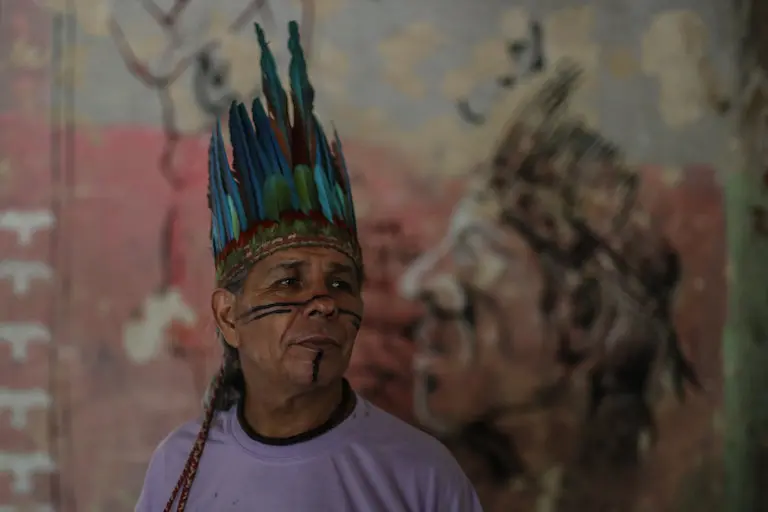
Júlio César Pereira de Freitas Güató, from the Güató people, is one of the leaders promoting the event. “I am Indigenous, not pardo,” aiming at bolstering self-declaration in all parts of Brazil.
“There is an official line that [the Indigenous population] does not reach 1 million,” he says, adding that he disagrees strongly with this statistic. He cites a recent mitochondrial DNA study that detected 34% of Indigenous genes in Brazilians.
The Indigenous movement is pressing IBGE to review how it collects census data. Many Indigenous people “do not declare themselves Indigenous because there are only public policies for Black, Quilombolas [Afro-Brazilian descendants of runaway slaves] and pardos,” Júlio Güató says, adding that without self-declaration there are no public policies.
Born in Corumbá, in Mato Grosso do Sul state, Júlio Güató has lived in São Paulo for 25 years. He is a Portuguese language schoolteacher and has a master’s degree in communication from the University of São Paulo (USP).
“When we are born Indigenous, we are born with the purpose of resisting. We were born in the urban context, the city that invaded the land,” he says. “Everything is Indigenous. All the rest is invasion.”
Maps: Ambiental Media / Juliana Mori.
Infographics: Ambiental Media/Laura Kurtzberg
Data research and analysis: Yuli Santana, Rafael Dupim and Ambiental Media





